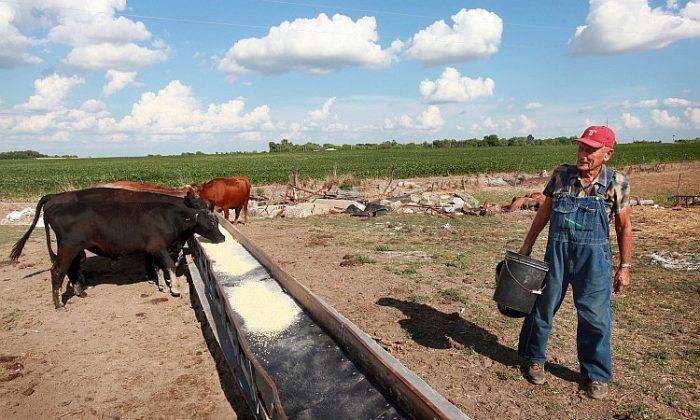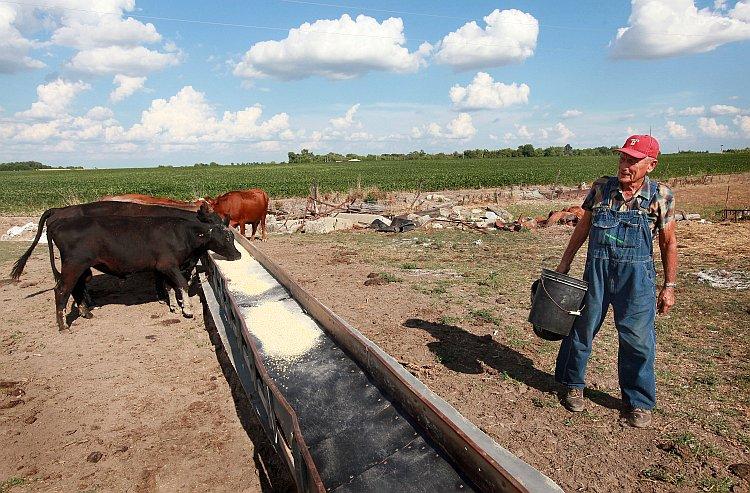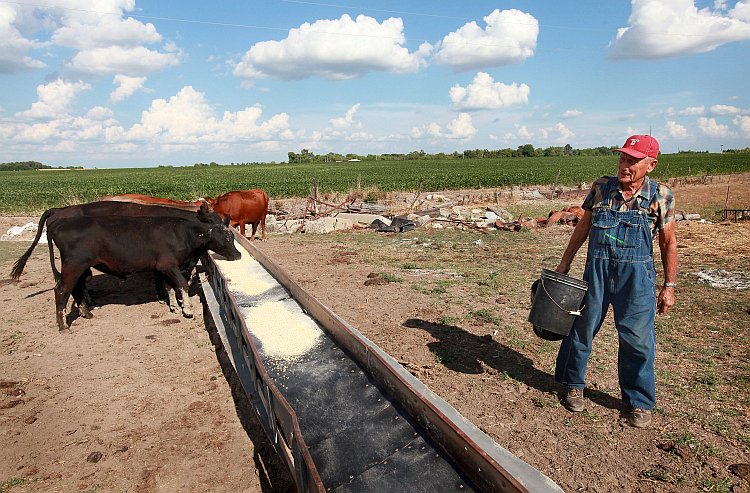South of New Orleans, the Mississippi River is so low that salt water is moving further upstream and the U.S. Army Corps of Engineers is getting ready to build barriers to keep the water fresh. Elsewhere, the corn is not as high as an elephant’s eye, as crops across the nation are in danger. Cows are having trouble giving milk.
This summer, America is running dry. The National Climatic Data Center reported on July 16 that the country is suffering the worst, most widespread drought since the 1950s.
About 71 percent of the country is in drought conditions, according to the National Drought Mitigation Center at the University of Nebraska.
The National Climatic Data Center reported that 55 percent of the country was in moderate short-term drought or worse for the first time since 1956, when 58 percent of the country was that dry. Extreme heat and low rainfall in June pushed 33 percent of the country from moderate drought to extreme drought, up from 23 percent in May. The total for all levels of drought was 70 percent.
In Illinois, the governor has asked for a disaster designation for 33 counties, after the U.S. Department of Agriculture (USDA) said 26 counties were eligible. A USDA disaster designation makes emergency loans available when crop losses are 30 percent or more.
“Agriculture is the backbone of Illinois’ economy, and as we’ve seen today, severe drought conditions are devastating crop production throughout the state,” Gov. Pat Quinn said in a statement. “As this drought continues, we are committed to using all the tools we have to help impacted farmers and communities bounce back.” Quinn said seven additional counties had reached the 30 percent crop loss threshold.
According to a report by Rich Tinker from the National Integrated Drought Information System (NIDIS), “In the 18 primary corn-growing states, 30 percent of the crop is now in poor or very poor condition, up from 22 percent the previous week.”
Half of the country’s pastures and ranges are in bad shape, up from 28 percent in June. Wildfires have increased since mid-June.
Beneficial but sporadic rains have eased the crisis in some areas, and more rain is expected in the week ahead, according to NIDIS. Tinker said that Alaska, Hawaii, and the Southwest and Southeast U.S., can hope for above-average rain and lessening heat.
The comparable drought in the 1950s devastated agriculture and the economy in the Great Plains and Southwestern U.S., according to the National Weather Service (NWS).
Rains brought relief in 1957, but one in 10 farmers lost their farms, according to the NWS.
The Epoch Times publishes in 35 countries and in 19 languages. Subscribe to our e-newsletter.








Friends Read Free